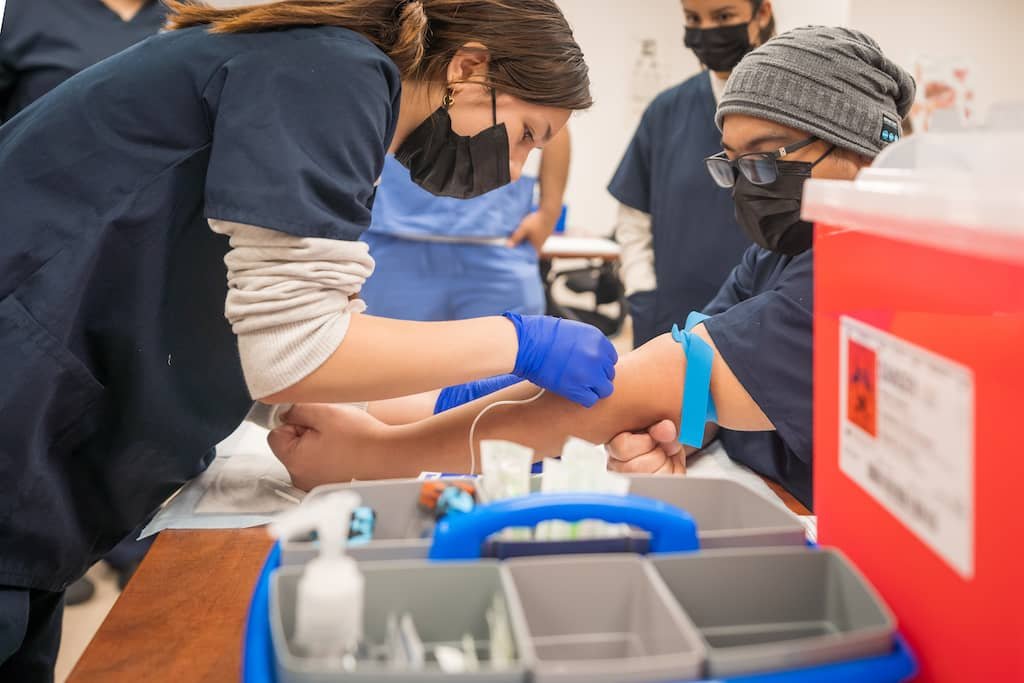Effective Strategies for Supply and Equipment Management in Phlebotomy Services
Summary
- Hospitals need to adapt their supply and equipment management strategies in response to changes resulting from Medicare and Medicaid expansion.
- Effective management of phlebotomy services is crucial for ensuring quality patient care and regulatory compliance.
- Utilizing technology, streamlining processes, and collaborating with vendors are key strategies for maintaining adequate supplies and equipment for phlebotomy services.
Introduction
Hospitals in the United States are facing significant challenges in maintaining adequate supplies and equipment for phlebotomy services, especially in light of changes resulting from Medicare and Medicaid expansion. Phlebotomy services are essential for collecting blood samples from patients for diagnostic testing, transfusions, and other medical procedures. Effective management of phlebotomy services is crucial for ensuring quality patient care, regulatory compliance, and cost efficiency. In this blog post, we will explore how hospitals can adapt their supply and equipment management strategies to meet the changing demands of phlebotomy services.
Challenges in Supply and Equipment Management
Managing supplies and equipment for phlebotomy services can be complex and challenging for hospitals. Some of the key challenges include:
Regulatory Compliance
Hospitals must comply with strict Regulations and guidelines set forth by organizations such as the Centers for Medicare and Medicaid Services (CMS) and the Clinical Laboratory Improvement Amendments (CLIA). This includes ensuring the proper storage, handling, and disposal of blood collection supplies, as well as the maintenance and calibration of Phlebotomy Equipment.
Cost Containment
Healthcare Costs are constantly rising, and hospitals are under pressure to contain costs while maintaining high-quality patient care. Managing supplies and equipment efficiently is essential for cost containment without sacrificing the quality of phlebotomy services.
Inventory Management
Keeping track of inventory, ordering supplies on time, and preventing stockouts or overstocks are ongoing challenges for hospitals. Inefficient inventory management can lead to delays in patient care, increased costs, and compliance issues.
Strategies for Effective Supply and Equipment Management
Utilizing Technology
Technology can play a crucial role in improving the efficiency of supply and equipment management for phlebotomy services. Hospitals can utilize inventory management systems, barcode technology, and automated supply ordering systems to streamline processes, reduce errors, and optimize inventory levels. These technologies can also help hospitals track supply usage, expiration dates, and reorder points more effectively.
Streamlining Processes
Streamlining processes for phlebotomy services can help hospitals reduce waste, save time, and enhance the quality of patient care. Hospitals can implement standardized procedures for blood collection, specimen processing, and equipment maintenance to ensure consistency and efficiency. By identifying and eliminating bottlenecks in the Workflow, hospitals can improve overall productivity and Patient Satisfaction.
Collaborating with Vendors
Collaborating with vendors can help hospitals optimize their Supply Chain for phlebotomy services. Vendors can provide valuable insights, recommendations, and training on the latest products and technologies. By establishing strong relationships with vendors, hospitals can negotiate better prices, receive discounts, and access innovative solutions that can improve supply and equipment management.
Conclusion
In conclusion, hospitals must adapt their supply and equipment management strategies in response to changes resulting from Medicare and Medicaid expansion. Effective management of phlebotomy services is essential for ensuring quality patient care, regulatory compliance, and cost efficiency. By utilizing technology, streamlining processes, and collaborating with vendors, hospitals can maintain adequate supplies and equipment for phlebotomy services while meeting the evolving demands of the healthcare industry.

Disclaimer: The content provided on this blog is for informational purposes only, reflecting the personal opinions and insights of the author(s) on the topics. The information provided should not be used for diagnosing or treating a health problem or disease, and those seeking personal medical advice should consult with a licensed physician. Always seek the advice of your doctor or other qualified health provider regarding a medical condition. Never disregard professional medical advice or delay in seeking it because of something you have read on this website. If you think you may have a medical emergency, call 911 or go to the nearest emergency room immediately. No physician-patient relationship is created by this web site or its use. No contributors to this web site make any representations, express or implied, with respect to the information provided herein or to its use. While we strive to share accurate and up-to-date information, we cannot guarantee the completeness, reliability, or accuracy of the content. The blog may also include links to external websites and resources for the convenience of our readers. Please note that linking to other sites does not imply endorsement of their content, practices, or services by us. Readers should use their discretion and judgment while exploring any external links and resources mentioned on this blog.

